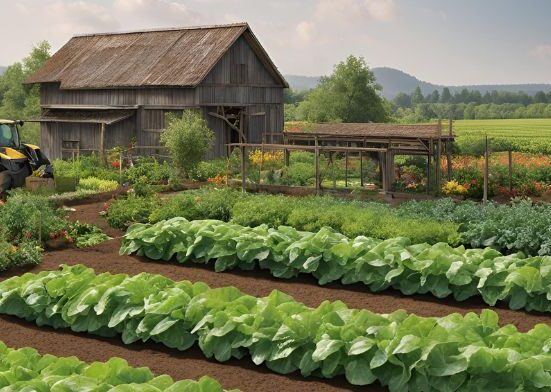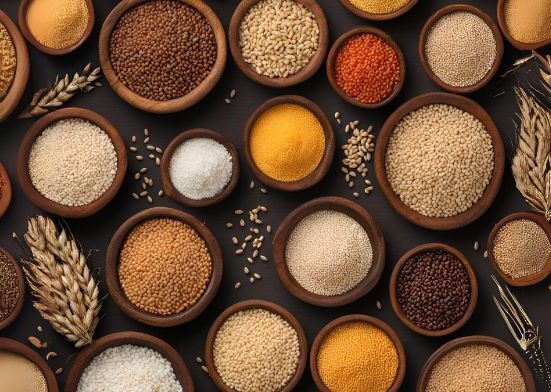Greenhouse farming has gained significant attention as a sustainable and efficient method for producing crops year-round. With rising global demand for fresh produce, controlled-environment agriculture allows farmers to grow high-quality crops regardless of weather conditions. But the big question remains: Is green house farming profitable? In this comprehensive guide, we’ll explore the profitability of greenhouse farming by examining its benefits, costs, revenue potential, challenges, and strategies for success. Whether you’re a seasoned farmer or a beginner considering this venture, this guide will provide the insights you need to make an informed decision.
What is Greenhouse Farming?
Greenhouse farming involves growing crops in a controlled environment, typically within structures made of glass, plastic, or polycarbonate. These structures allow farmers to regulate temperature, humidity, light, and other environmental factors to optimize plant growth. Greenhouses can be used to grow a wide variety of crops, including vegetables, fruits, herbs, flowers, and even specialty crops like microgreens or exotic hybrid farming plants.
The primary advantage of greenhouse farming is its ability to extend growing seasons, protect crops from adverse weather, and increase yields compared to traditional outdoor farming. However, profitability depends on several factors: initial investment, operational costs, market demand, and management greenhouse agriculture efficiency.
Benefits of Greenhouse Farming
 Greenhouse farming offers numerous benefits, making it an attractive option for modern agriculture. First, it provides a controlled environment where temperature, humidity, and light can be optimized for plant growth, leading to increased crop yield and quality. This protection from extreme weather conditions, such as frost or drought, ensures year-round production, which enhances food security. Greenhouses also reduce the need for pesticides and herbicides, as the enclosed space minimizes pest invasion.
Greenhouse farming offers numerous benefits, making it an attractive option for modern agriculture. First, it provides a controlled environment where temperature, humidity, and light can be optimized for plant growth, leading to increased crop yield and quality. This protection from extreme weather conditions, such as frost or drought, ensures year-round production, which enhances food security. Greenhouses also reduce the need for pesticides and herbicides, as the enclosed space minimizes pest invasion.
Furthermore, they allow for water conservation through more efficient irrigation systems, which is crucial in regions facing water scarcity. Greenhouse farming is also space-efficient, as it allows for vertical farming, maximizing land use. Additionally, by reducing transportation costs and emissions, it supports sustainability. Overall, greenhouse farming is a valuable solution for producing fresh, healthy food while minimizing environmental impact and resource usage.
Year-Round Production
Year-round production refers to the ability to continuously produce goods or services throughout all seasons of the year, without interruption. This concept is especially valuable in industries such as agriculture, manufacturing, and energy, where maintaining consistent output is crucial. By leveraging advanced technologies, efficient processes, and optimal resource management, businesses can overcome seasonal limitations and ensure a steady supply. This approach not only boosts productivity and profitability but also helps stabilize employment, supply chains, and market demand. Year-round production is a key strategy for businesses looking to remain competitive and meet consumer needs is green house farming profitable consistently?
Higher Yields
Higher Yields” refers to the improved output or returns generated by a specific investment, agricultural practice, or production method. In agriculture, it means growing more crops per acre or increasing the productivity of land, often through innovative techniques such as better soil management, advanced machinery, or precision farming. In financial contexts, “higher yields” describe the increased returns on investments, such as stocks, bonds, or real estate, typically driven by favorable market conditions or strategic decisions. Achieving higher yields is often a key goal for maximizing efficiency, profitability, and sustainability in various farming under solar panels industries.
Crop Diversification
Greenhouses allow farmers to grow high-value or specialty crops that may not thrive in local climates. Examples include heirloom tomatoes, exotic herbs, or organic berries, which often command premium prices in the market. The controlled environment of a greenhouse minimizes exposure to pests and diseases, reducing the need for chemical pesticides. This not only lowers input costs but also appeals to consumers seeking organic or sustainably grown produce.
Water and Resource Efficiency
Greenhouses often use advanced irrigation systems like drip irrigation or hydroponics, which conserve water and nutrients. This efficiency can lower operational costs and align with sustainable farming farmers greenhouse practices.
Market Flexibility
Greenhouse farmers can target niche markets, such as local restaurants, farmers’ markets, or direct-to-consumer sales, to farmer johns greenhouse maximize profits. The ability to supply fresh produce year-round gives greenhouse farmers a competitive robotics and agriculture edge.
Costs of Greenhouse Farming
Greenhouse farming offers many advantages, such as year-round production and climate control, but it also comes with significant costs. Initial investment is one of the major expenses, as constructing a greenhouse requires materials, land, and equipment like irrigation systems, lighting, and climate control systems. These costs can vary depending on the type and size of the greenhouse. Additionally, operating expenses include energy costs for heating, cooling, and lighting, as well as labor costs for maintenance and harvesting.
While greenhouse farming can reduce water and pesticide usage, it still requires significant inputs of fertilizers, seeds, and plant nutrients. Another hidden cost is the technology and monitoring systems needed to optimize growth conditions. While the return on investment can be substantial due to higher yields and more consistent crops, it takes time and careful management to ensure profitability in the long run.
Initial Setup Costs
Initial setup costs refer to the one-time expenses incurred when starting a new business, project, or venture. These costs typically cover a range of activities, including purchasing equipment, leasing or buying property, installing software, securing licenses, and covering any other startup fees necessary for operations. They are essential for ensuring that a business has the resources it needs to function from the outset. Understanding and planning for these costs is crucial as they can impact cash flow and profitability in the early stages of development. Proper budgeting for initial setup costs helps prevent financial strain during the startup phase.
Operational Costs
Ongoing expenses include:
- Labor: Greenhouse farming is labor-intensive, especially for planting, harvesting, and maintenance. Labor costs vary by region but can account for 30-50% of operational expenses.
- Utilities: Heating, cooling, and lighting (especially in high-tech greenhouses) generate high energy costs. For example, heating a greenhouse in a cold climate can cost $1-$3 per square foot annually.
- Inputs: Seeds, fertilizers, growing media, and pest control supplies add to expenses. Hydroponic or organic systems may require specialized inputs, increasing costs.
- Maintenance: Regular repairs to structures, equipment, and irrigation systems are necessary to ensure smooth operations.
Marketing and Distribution
Selling greenhouse produce requires investment in packaging, transportation, and marketing. Farmers targeting local markets may need to budget for farmers’ market fees, delivery is green house farming profitable vehicles, or e-commerce greenhouse companies in ga platforms.
Revenue Potential of Greenhouse Farming
 Greenhouse farming offers significant revenue potential by optimizing the growing environment for various crops. This method allows farmers to extend growing seasons, reduce the impact of weather, and increase yield per square foot. Greenhouses support controlled conditions, enabling the production of high-value, niche crops such as organic vegetables, herbs, and flowers that can command premium prices.
Greenhouse farming offers significant revenue potential by optimizing the growing environment for various crops. This method allows farmers to extend growing seasons, reduce the impact of weather, and increase yield per square foot. Greenhouses support controlled conditions, enabling the production of high-value, niche crops such as organic vegetables, herbs, and flowers that can command premium prices.
Additionally, with the rise in demand for sustainable, local produce, greenhouse farming is well-positioned to meet the needs of environmentally conscious consumers. The ability to grow year-round can provide a continuous cash flow, making it a lucrative option for investors. Innovations in technology, such as automated climate control and hydroponics, further increase productivity, enhancing profitability. While initial setup costs can be high, the long-term revenue potential and opportunity to scale operations make greenhouse farming an appealing option for entrepreneurs seeking a profitable agricultural venture.
Crop Selection
Crop selection is a crucial process in agriculture, where farmers choose the right crops to grow based on various factors like soil type, climate, market demand, and crop rotation. It involves analyzing environmental conditions, such as temperature, rainfall, and sunlight, to ensure optimal growth and yield. Choosing the right crop can significantly affect profitability, sustainability, and resource usage. Farmers must consider both short-term and long-term impacts, such as pest resistance, water usage, and market trends, to make informed decisions. Crop selection ultimately plays a vital role in ensuring food security and promoting sustainable farming practices.
Yield Optimization
Maximizing yields through is green house farming profitable, efficient growing techniques (e.g., vertical farming, hydroponics, or aquaponics) can significantly boost revenue. For example, a 5,000-square-foot greenhouse growing hydroponic lettuce could produce 50,000 pounds annually, generating $150,000-$500,000 in revenue at $3-$10 per pound.
Market Prices and Sales Channels
Local and niche markets often offer higher prices than wholesale. For instance:
- Farmers’ Markets: Direct-to-consumer sales can yield 20-50% higher prices than wholesale.
- Restaurants and Grocers: Establishing contracts with local businesses ensures steady demand.
- Community Supported Agriculture (CSA): Subscription-based models provide predictable revenue.
- Online Sales: E-commerce platforms allow farmers to reach broader audiences, though shipping costs must be considered.
Case Study: A Profitable Greenhouse
Consider a 5,000-square-foot greenhouse growing organic tomatoes in a mid-range setup. Assumptions:
- Setup Cost: $150,000 (including structure, irrigation, and infrastructure).
- Annual Operating Costs: $50,000 (labor, utilities, inputs, and marketing).
- Yield: 25 pounds per square foot, or 125,000 pounds annually.
- Price: $3 per pound, generating $375,000 in revenue.
After subtracting operating costs, the gross profit is $325,000. Assuming a 10-year payback period for the initial investment ($15,000 per year), the net profit is $310,000 annually. This simplified example illustrates the potential for profitability, though actual results vary based on local conditions and agriculture in greenhouse management.
Challenges of Greenhouse Farming
 Greenhouse farming, while offering a controlled environment for plant growth, comes with several challenges. One of the primary issues is the high initial setup cost, as constructing a greenhouse requires significant investment in materials, technology, and labor. Additionally, maintaining optimal climate conditions can be costly and complex, requiring precise temperature, humidity, and light control.
Greenhouse farming, while offering a controlled environment for plant growth, comes with several challenges. One of the primary issues is the high initial setup cost, as constructing a greenhouse requires significant investment in materials, technology, and labor. Additionally, maintaining optimal climate conditions can be costly and complex, requiring precise temperature, humidity, and light control.
Energy consumption is another concern, as heating or cooling a greenhouse can lead to high utility bills. Pest and disease management can also be more challenging in enclosed environments, where once pests are introduced, they can quickly spread. Another challenge is water management, as greenhouse farming often requires advanced irrigation systems to prevent over- or under-watering. Moreover, there are the risks of equipment failure, which could disrupt the growing process and lead to losses. Despite these challenges, with proper planning and management, greenhouse farming can yield substantial returns and help ensure year-round crop production.
High Initial Investment
High Initial Investment” refers to a significant amount of capital required upfront to start a business, invest in equipment, or develop a product. This initial expenditure can cover costs like research and development, purchasing assets, leasing space, marketing, and other operational expenses. While this investment is necessary to launch certain ventures, it can be a barrier for some entrepreneurs or businesses, especially if they don’t have access to sufficient funding. However, once the initial investment is made, the potential for growth and profit may outweigh the risks involved, provided the business is well-managed.
Energy Costs
Maintaining optimal growing conditions requires significant energy, especially in regions with extreme climates. Rising energy prices can erode profits. Greenhouse farming requires knowledge of crop management, climate control, and irrigation systems. Inexperienced farmers may face a steep learning curve.
Market Competition
As greenhouse farming grows in popularity, farmers may face competition from large-scale operations or imports. Differentiating through quality, branding, or niche crops is essential. Zoning laws, permits, and food safety regulations can complicate operations. Compliance costs may add to expenses.
Strategies for Maximizing Profitability
 Strategies for Maximizing Profitability” focus on optimizing business processes to increase revenue and reduce costs. Key approaches include improving operational efficiency through automation, reducing overhead by streamlining supply chains, and focusing on customer retention. Pricing strategies like dynamic pricing can capture greater value, while expanding product offerings or entering new markets can drive growth.
Strategies for Maximizing Profitability” focus on optimizing business processes to increase revenue and reduce costs. Key approaches include improving operational efficiency through automation, reducing overhead by streamlining supply chains, and focusing on customer retention. Pricing strategies like dynamic pricing can capture greater value, while expanding product offerings or entering new markets can drive growth.
Additionally, investing in marketing efforts that target high-conversion segments and leveraging data analytics for decision-making can maximize profitability. Continuously evaluating performance metrics and adjusting strategies ensures that businesses stay competitive and adapt to market changes, creating long-term financial sustainability.
Start Small and Scale Up
Begin with a small greenhouse to test crops, markets, and systems before investing in larger setups. This minimizes financial risk and allows for learning. Focus on crops with strong local demand and high profit margins. Conduct market research to identify gaps in supply.
Invest in Technology
While expensive, technologies like automated climate control, LED lighting, and hydroponics can increase yields and reduce labor costs over time. Implement water-saving irrigation systems and energy-efficient heating to lower operational costs. Consider renewable energy sources like solar panels.
Build Strong Market Relationships
Develop partnerships with local restaurants, grocers, or CSA programs to ensure consistent sales. Branding as organic or locally grown can justify premium prices. In addition to crops, consider value-added products like dried herbs, sauces, or farm tours to boost income.
Stay Informed
Keep up with industry trends, new technologies, and government grants for sustainable agriculture. Joining greenhouse farming associations can provide valuable resources.
Is Greenhouse Farming Right for You?
Greenhouse farming offers a controlled environment that can enhance crop yields by regulating temperature, humidity, and light. If you have limited space or face unpredictable weather, this method could be ideal. It also extends growing seasons and protects plants from pests and diseases. However, the initial investment and ongoing maintenance costs can be high, and it requires technical knowledge for optimal operation.
If you have the resources, a passion for sustainable agriculture, and the ability to manage a greenhouse’s complexity, greenhouse farming might be a great fit for you. It’s perfect for those seeking to grow fresh produce year-round. If you’re willing to invest time, money, and effort, greenhouse farming offers a rewarding opportunity to produce high-quality crops and build a sustainable business.
Conclusion:
Greenhouse farming holds immense potential for profitability, driven by its ability to produce high yields, extend growing seasons, and target premium markets. However, success requires careful planning, efficient management, and a willingness to navigate challenges like high costs and technical complexity. By choosing the right crops, optimizing operations, and building strong market connections, greenhouse farmers can achieve substantial returns on investment.
If you’re considering greenhouse farming, start by researching local market demand, exploring financing options, and experimenting with a small-scale setup. With dedication and strategic planning, greenhouse farming can be a lucrative and fulfilling venture in the ever-growing world of sustainable agriculture.
FAQ:
What is Greenhouse Farming?
Greenhouse farming involves cultivating plants in a controlled environment, usually in a structure made of glass, plastic, or other transparent materials. This method provides optimal growing conditions by regulating temperature, humidity, light, and air circulation, allowing for year-round crop production.
Is Green House Farming Profitable?
Yes, greenhouse farming can be highly profitable, especially if done efficiently. The profitability depends on the crops grown, market demand, location, and management practices. Greenhouses allow for extended growing seasons and protection from pests, reducing the risks of crop loss and improving yields.
How Much does it cost to set up a Greenhouse?
The cost of setting up a greenhouse can vary widely depending on size, materials, and location. A basic small-scale greenhouse might cost between $2,000 to $5,000, while larger commercial operations can require upwards of $100,000 or more. You must also account for operational costs like heating, cooling, labor, and irrigation systems.
Is Green House Farming Sustainable?
Yes, greenhouse farming can be sustainable if done with environmentally friendly practices such as water recycling, renewable energy use (solar panels, for instance), and efficient resource management. Moreover, growing crops locally in greenhouses can reduce the carbon footprint associated with transportation.
Can Greenhouse Farming be done on a Small Scale?
Yes, greenhouse farming can be very successful on a small scale. Many farmers start with small, home-based greenhouses and grow high-value crops such as herbs or specialty vegetables. These operations can be more manageable and have lower startup costs, making them a great entry point for beginners.







